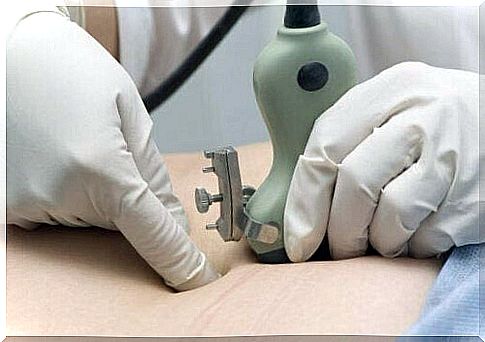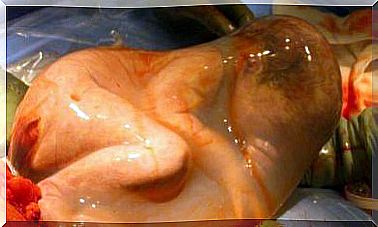What Are The Signs Of Oligohydramnios?

Have you ever heard of oligohydramnios ? Experts use this term to describe a low amniotic fluid content.
This fluid is important for babies to live in the womb. There it forms a protective layer around your body. In addition, it also helps to properly develop your muscles, respiratory organs and the digestive system.
The amniotic fluid begins to increase in volume 12 days after conception. In fact, its composition changes as babies develop.
Over time, babies move with the help of the amniotic fluid. That is why it is important that it is kept at a healthy level.
If the amount of fluids is too high or too low, babies can have problems with their growth and development. If it is too low, it is called oligohydramnios . However, if it is too high, it is called polyhydramnios.
What is oligohydramnios and how do you know if you have it?
As mentioned earlier, medical professionals speak of oligohydramnios when an insufficient amount of amniotic fluid surrounds the baby. This is measured using various methods, one of which is the ultrasound method. Amniotic fluid control is possible at different stages of pregnancy, and you may need some checkups to control and treat this condition.
What causes low levels of amniotic fluid?
- Maternal diseases, such as preeclampsia, separation of the placenta, and high blood pressure.
- Side effects from other medications that pregnant women are taking. In fact, some of them could be NSAIDs.

- Prolonged pregnancy or a pregnancy that goes beyond the calculated date. In other words, a pregnancy that lasts over 40 weeks.
- The fetus has any kind of disease that involves poor development of urinary functions.
- Problems with the growth and development of the fetus in the womb. This condition is known as intrauterine growth retardation.
- Changes in the formation of chromosomes.
What are the signs of oligohydramnios?
In general, this condition does not have any specific symptoms that are easy to spot. However, mothers may think oligohydramnios is present if they feel that their baby is suddenly less moving.
Another sign of oligohydramnios is poor uterine growth compared to normal growth rates.
What are the consequences of oligohydramnios?
If you experience oligohydramnios during the first half of pregnancy, the most serious risks are:
- Birth defect. A small amount of amniotic fluid can have consequences during childbirth, such as compression of the baby’s organs and prenatal injuries.
- Increased chance of miscarriage or death of the fetus.
If it is diagnosed in the second half of pregnancy, it could lead to the following negative consequences:
- Reduced growth in the uterus. Therefore, there will be deficits in the baby’s organ development.
- Increased chances of premature birth.
- Childbirth complications. For example, the umbilical cord could be compressed or meconium could escape into the amniotic fluid prematurely, i.e. still in the uterus. In addition, a caesarean section may be required in this case.
Treatment of low levels of amniotic fluid
- Amniotic fluid replenishment (amniotic infusion) during childbirth. For this purpose, a specialist inserts a serum into the sinus via a catheter. With this technique , the medical professionals can help to increase the amniotic fluid level again. In addition, they decompress the umbilical cord. This, in turn, reduces the chances of needing a c-section.
- Fluid injections or amniocentesis. This procedure is similar to the previous one, except that it is carried out before the birth. It’s important to clarify at this point that the fluid the doctor injects with this method only lasts for about a week. So this is a temporary measure that doctors can use to check and make sure that the baby is developing normally.

- Rehydration of the mother. When the mother is given fluids or drinks more water, the amount of amniotic fluid in the womb also increases.
It is important to know how much amniotic fluid is normally available for your baby to grow and develop fully. Remember that this liquid will be your baby’s home for many weeks, so it needs to be as good as possible.
If you think you have oligohydramnios, talk to your doctor about which tests are needed to make a diagnosis.









